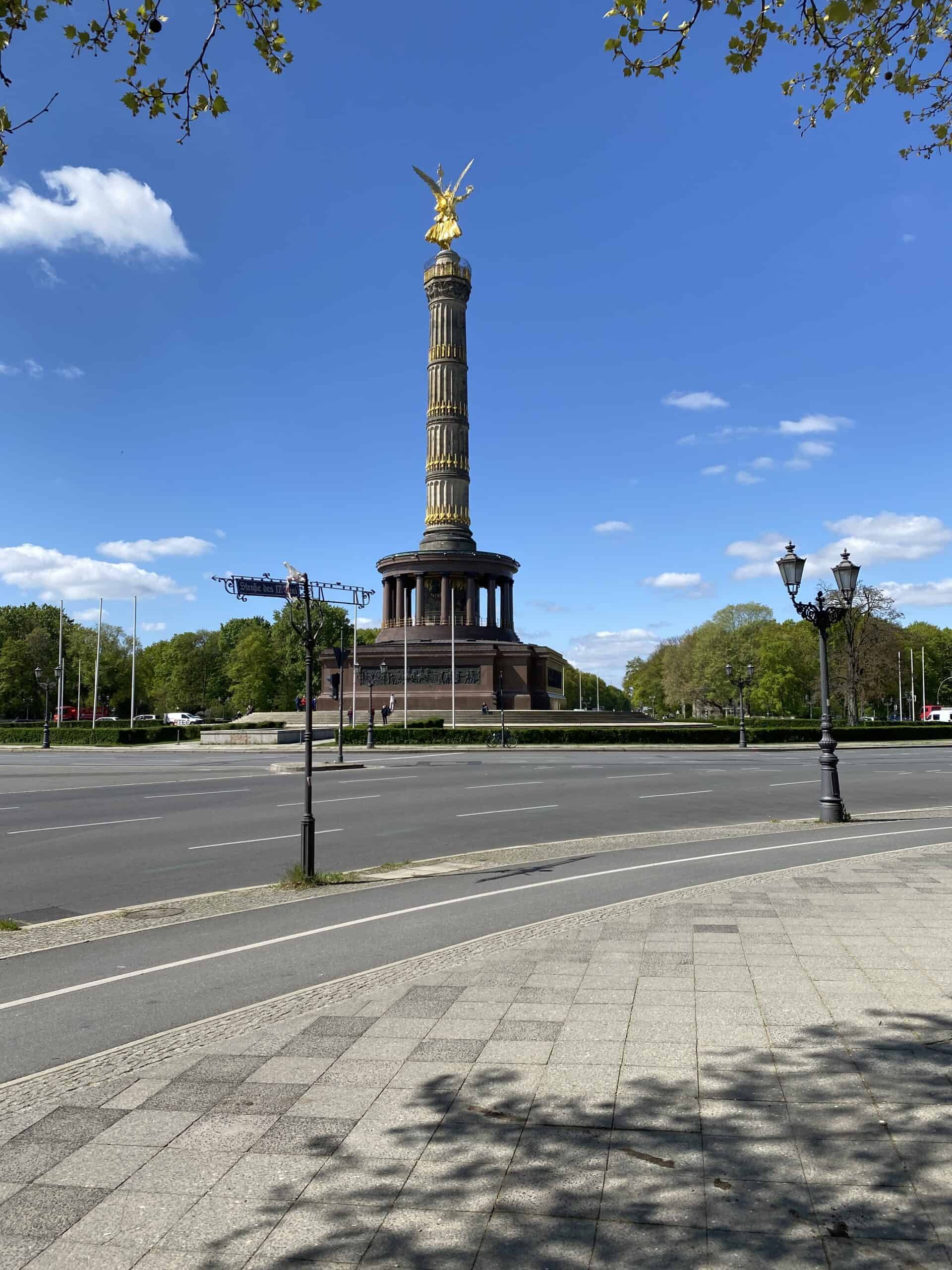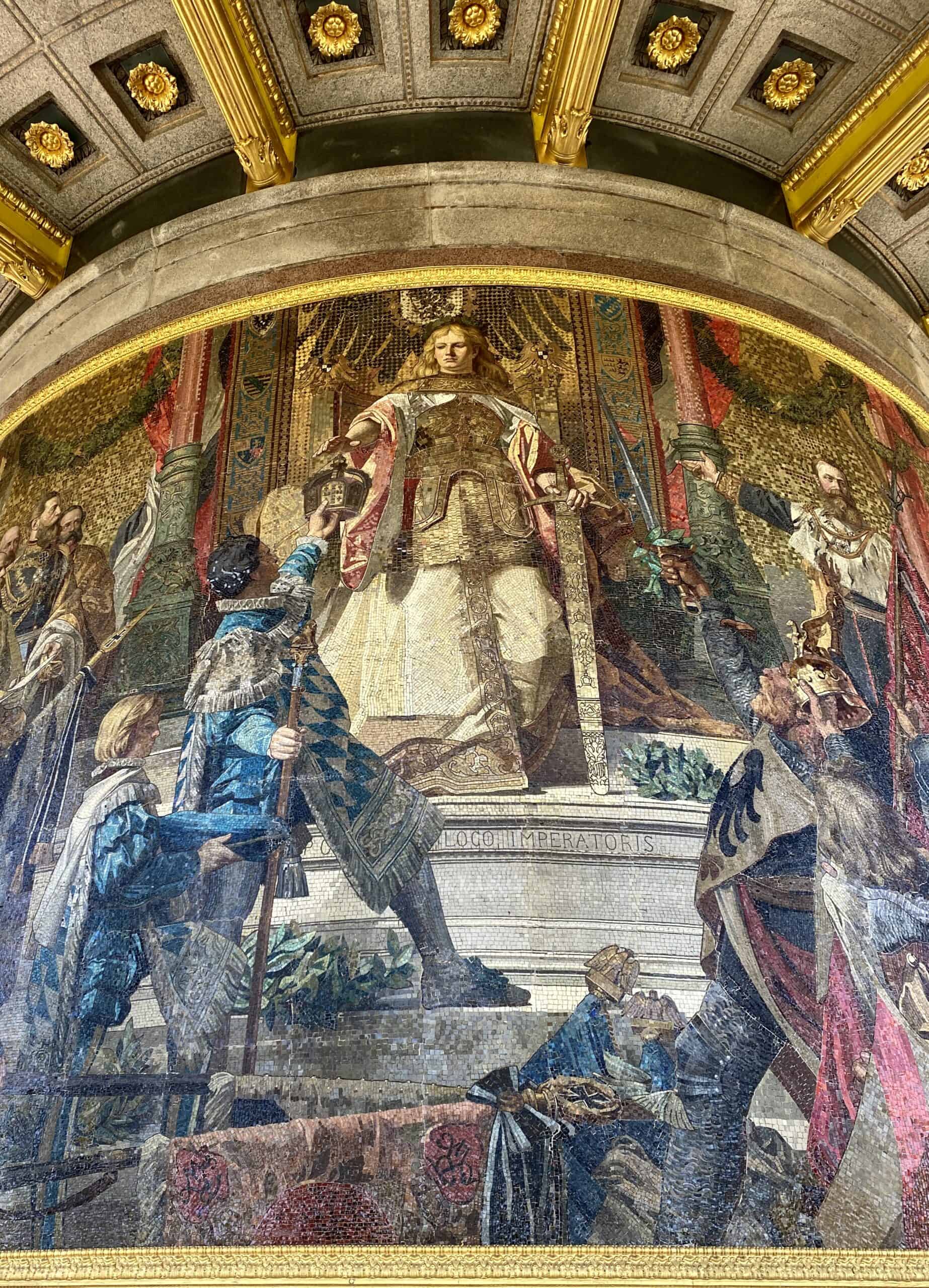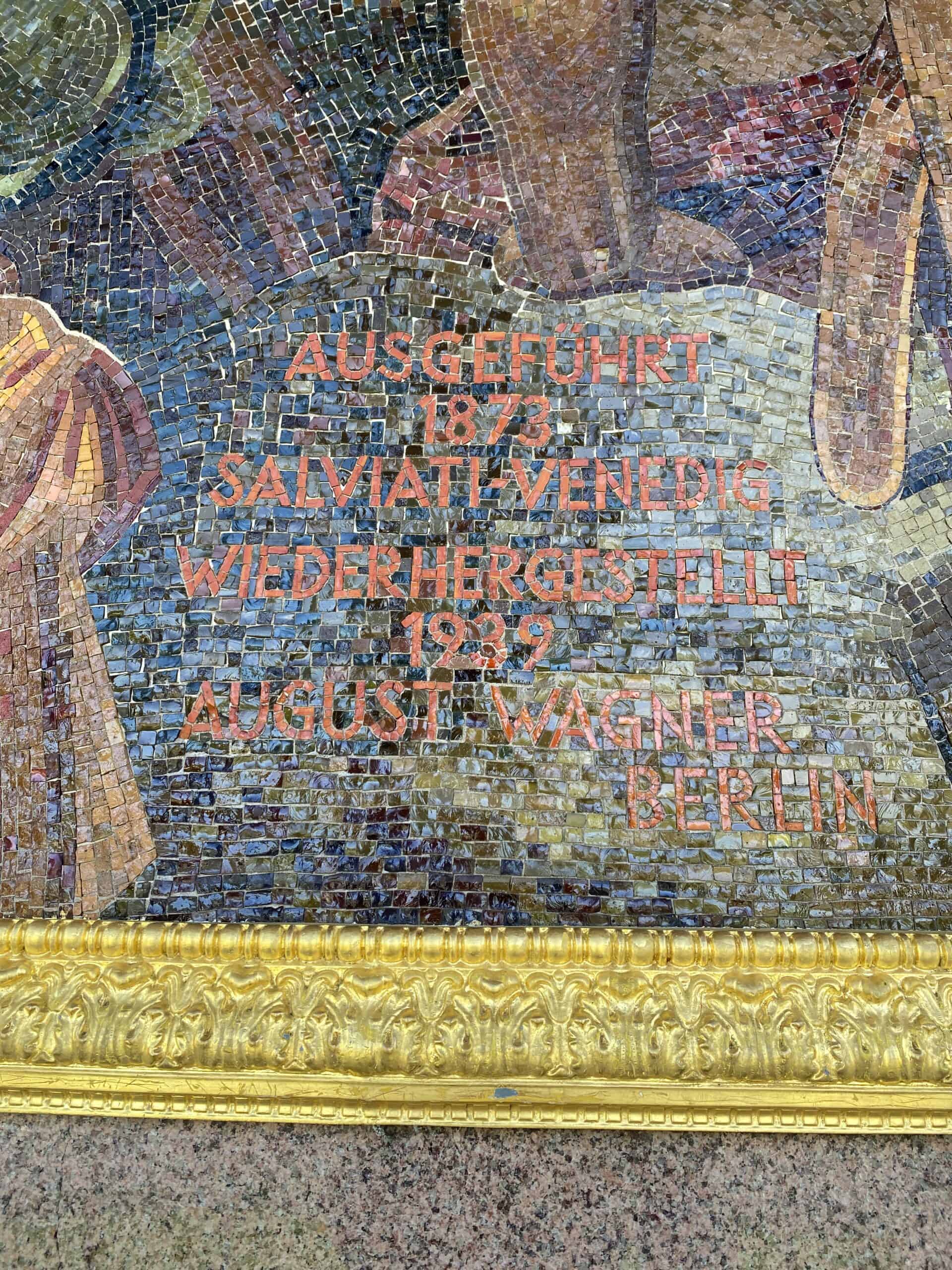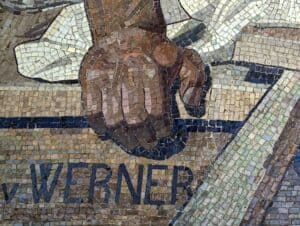(for English scroll to the end of the blog)
An einem dieser schönen, glasklaren Maitage stoppte ich auf meinem Rad-Weg von Charlottenburg nach Mitte an der Siegessäule, um mir die Mosaiken anzusehen. Zwar habe ich Schwierigkeiten mit der Heroisierung von Kriegen, aber das Mosaik als eine der haltbarsten Techniken in der darstellenden Kunst, weckt unabhängig vom Inhalt, mein Interesse.

Siegessäule Berlin, 3. Mai 2023
Der preußische König Wilhelm I. regte 1864 nach dem Deutsch-Dänischen Krieg Denkmalsetzungen auf den Schlachtfeldern wie auch in Berlin an. Innerhalb weniger Jahre kamen zwei weitere siegreiche Kriege hinzu, 1866 der Deutsche Krieg gegen Österreich sowie 1870–1871 der Deutsch-Französische Krieg. Die drei Segmente der Siegessäule und die krönende Bronzeskulptur der Viktoria sollten an diese Siege erinnern und sind in den Szenen des späteren Gemäldes der Säulenhalle abgebildet.
Ein interessanter Fakt: Wilhelm I. hatte an diesem Gemälde von Anton von Werner, welches als Vorlage für das Mosaik diente, die drastische Darstellung des in den Staub geworfenen Napoleon III. beanstandet.
Wilhelm I. wollte auch nicht auf dem Thron des Deutschen Reiches dargestellt werden. Werner ersetzte ihn durch die allegorische Figur einer Germania auf dem Kaiserthron.

Germania auf dem Kaiserthron, Mosaik 1874, Siegessäule Berlin
Zur Einweihung der Siegessäule Anfang 1873 war nur das Gemälde fertig. Bereits im Sommer 1873 regte Werner die Übertragung in ein haltbares Material an.
Im Mai 1874 wurde das Gemälde von der Säulentrommel abgenommen und in das Stabilimento Salviati nach Venedig geschickt.
Die dort vorgenommene Übertragung in Mosaiksteine konnte ein Jahr später in Berlin angebracht werden.
Über die Wiederherstellung des Mosaiks 1939, die hier in der Inschrift vermerkt ist, werde ich mich demnächst informieren und Euch davon berichten.

Mosaik Gestaltung Stabilimento Salviati, Venedig 1873/74 nach einer Vorlage von Anton von Werner

Mosaic at the Victory column, Berlin
On one of those beautiful, crystal clear May days, I stopped at the Victory Column on my cycle path from Charlottenburg to Berlin Mitte to look at the mosaics. While I have difficulty with the heroization of wars, the mosaic, as one of the most durable techniques in the performing arts, caught my interest regardless of the content.
In 1864, after the German-Danish War, Prussian King William I encouraged monument placements on the battlefields as well as in Berlin. Within a few years, two more victorious wars were added, the German War against Austria in 1866 and the Franco-Prussian War in 1870-1871. The three segments of the Victory Column and the crowning bronze sculpture of Victoria were intended to commemorate the victories. These themes corresponded to the sequence of the later circular painting for the column hall.
Wilhelm I had objected to the painting by Anton von Werner, which served as a model for the mosaic, because of the drastic depiction of Napoleon III thrown into the dust. He also repeatedly influenced the circular painting later.
For example, he did not want to be depicted on the throne of the German Empire. Werner replaced him with the allegorical figure of a Germania on the imperial throne.
For the inauguration of the Victory Column in 1873, only the carton executed as a painting was ready. As early as the summer of 1873, Werner suggested transferring it to a more durable material.
In May 1874, the painting was removed from the column drum and sent to the workshop Stabilimento Salviati in Venice.
The mosaic made there could be installed in Berlin one year later.